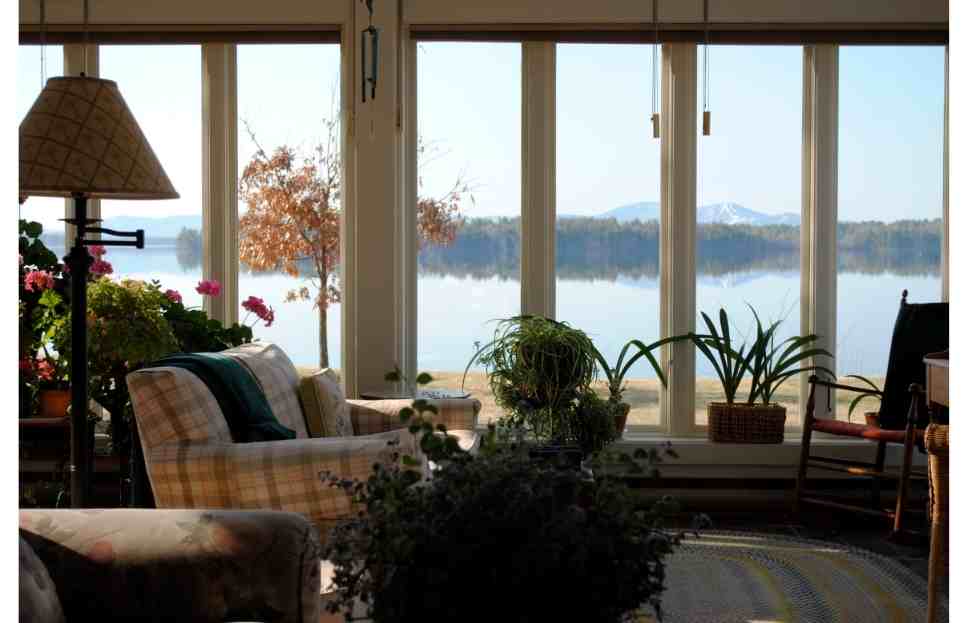Last Updated:July 14, 2024
What Is the Difference Between a Sunroom and a Patio Enclosure?

A sunroom is a generic term for any room on the exterior of a home that has a lot of windows. This includes patio enclosures, conservatories, 3 season rooms, and many other types of space. An enclosed patio will concrete floor or all weather carpet. The walls for the enclosed patio could be half walls with screens at the top or even screens from floor to ceiling. Enclosed patios are normally not part of the central HVAC system making them far closer to a 3 season room than any other type of sunroom.
Advantages of an enclosed patio
The biggest reason to choose a patio enclosure instead of a fully built out sunroom is cost. A patio enclosure will be between one-half and one-third the price of a fully insulated sunroom which has been integrated into the home’s central heating and cooling systems.
Another perk for enclosed patios is that they are far more DIYer-friendly. We’ve had several friends convert a covered carport to an enclosed patio. They will have a standalone heater and a window air conditioner. They may also have some existing electrical sockets to avoid any wiring work too.
Finally, because an enclosed patio won’t count in the home’s total occupiable, there are fewer restrictions and regulations on what you need to do. Each state will have different rules that we couldn’t possibly cover in our general post, so I recommend checking out your state’s building code to ensure you fully comply with them.
If you’re not sure how to handle this, the local pros at Home Depot or Lowe’s will be able to help guide you to the right answers for your specific area. Both have a ‘Ask the Pros’ desk that is open during, and I would recommend talking about your project with them. Even if there the concrete slab is already poured, you’ll still be spending thousands of dollars for material, and it just makes sense to ask for guidance before buying the wrong materials.
Disadvantages of an enclosed patio
In most cases, simply enclosing a covered patio with either screens or walls will not be enough to count towards the total occupiable space for your home. This means it won’t drive up the same value of your home as a sunroom that is fully integrated into the home.
If you go with simple screens instead of glass windows, you’ll have very little control over the temperature of the room meaning that there will be several months each year where the room will get very little if any use.
The room will also have some limitations in terms of what type of furniture or items can be stored there. Older CRT televisions won’t do well in a room that has significant temperature changes. You may also want to go with all-weather or outdoor furniture because some types of indoor furniture will have a vastly shortened lifespan in a room exposed to the elements.
Enclosed patio flooring
Most enclosed patios will have a concrete slab or pavers for their floor. You can place some area rugs on top of this flooring, but we strongly recommend not using carpet.
An area rug can be hung up to dry if it gets wet. It can also easily be replaced if necessary. Replacing carpet can be an expensive proposition.
Can you use a patio enclosure for pets, dogs, or cats?
A patio enclosure is a great option if you have a dog or cat that you want to keep inside a protected area, but don’t want them to live in the main part of the house. This can be for allergy reasons or to keep individual pets separated.
You’ll want to make sure that it’s a safe temperature for your pets to live in since the enclosure won’t have climate control. We live in Arizona where temperatures can exceed 115 in the summer. This can be dangerous for pets to stay in an area like this so we suggest checking to make sure that your pet will feel comfortable.
Another factor if you’re going to keep your dog in an enclosed area is to make sure that the walls, screens, or windows are strong enough to stand up to the wear and tear of the dog. Our friend had their entire patio screen destroyed by a dog.
If this happens to you there is some screen repair tape to patch the screen or door. The bigger risk is that it will create an opening for the pet to get out OR for something that may mean harm to your little furry friend can get inside.
Can you use a patio enclosure for plants?
An uncovered patio is going to be a far better option for most people and plants. An enclosed patio or porch will get less sunlight than a simple concrete slab. Additionally, the roof will mean the plants get less sunrise. Furthermore, you’ll need to water the plants since they won’t get the benefit of the summer rains.
There is one exception to this rule, and that’s if you have a smaller garden that is eaten up by the local wildlife. My mother grows tomatoes and cucumbers. Every year she loses a good portion of her produce to wandering deer. She has begun fencing them off, but the deer still find a way to steal some each year.
Wrapping up
That’s it for our post comparing enclosed patios to sunrooms. This is a fairly new topic, and we love hearing from our readers. Have you enclosed a patio? If so were there any tips or tricks you’d like to share with other members of the community?
Remember, the owners, editors, and authors on this site are homeowners who enjoy DIY projects. The skill of our readers ranges from people who are just starting to people who have grown up doing projects since childhood.
If you’re looking for a way to improve your home with an addition that will give you lots of natural light and fresh air, then adding a sunroom may be the perfect solution. This is because a sunroom can provide so many benefits beyond just being beautiful – it also increases comfort levels in your home by providing more circulation and reducing heat gain from sunlight entering through windows on sunny days. With all these great perks, why not take some time today to check out our complete guide to sunrooms? We have tips here for how to choose materials, find contractors, manage costs and much more!




